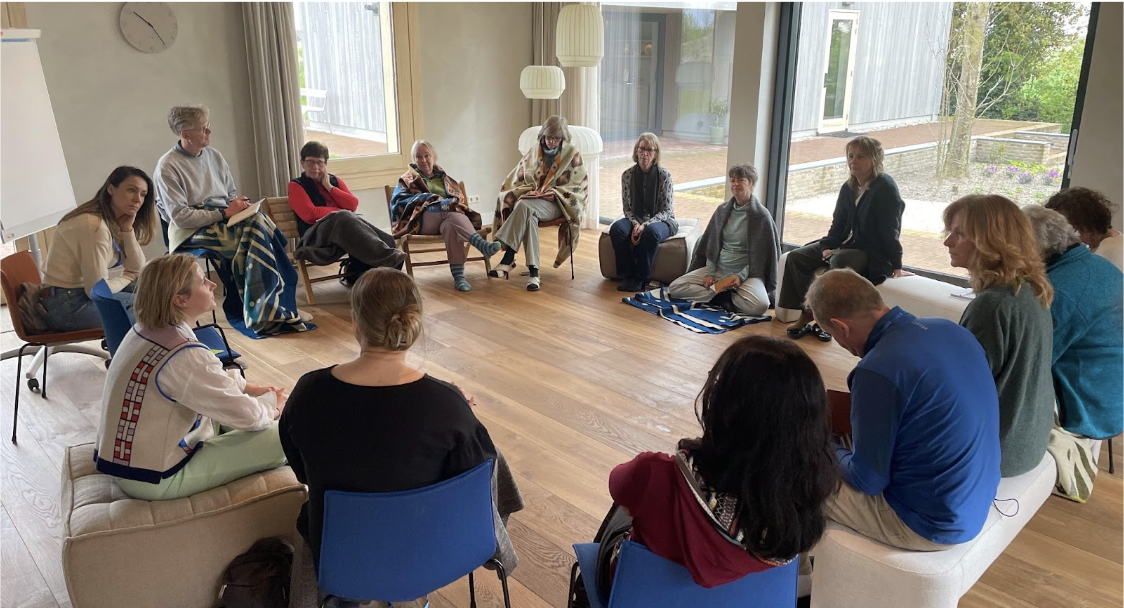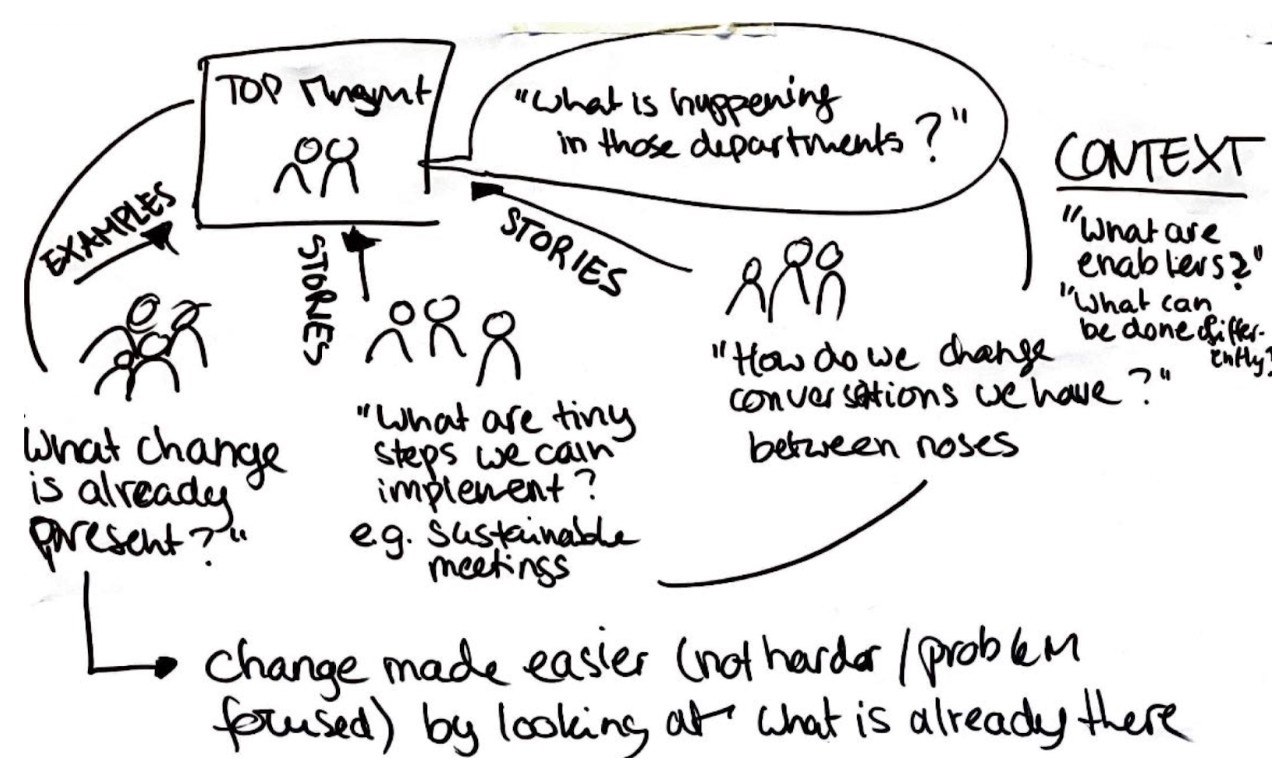Good practices in the public sector
How to help and motivate people to make their organisation more sustainable
Aug 29, 2024
Synopsis
Lien Tettelin’s open space session on “Good practices in the public sector” focused on strategies for enhancing organisational sustainability. The session explored how public sector entities can integrate sustainability into their decision-making processes, develop relevant strategies and KPIs, and redefine notions of profit to encompass social benefits.
Critical strategies discussed included starting conversations around the environmental impacts of decisions, such as carbon footprints, and developing targeted strategies for sectors with the most significant potential impact.
Participants examined the economic advantages of sustainability, such as awards recognition, easier recruitment due to an enhanced sense of purpose, and operational improvements like wastewater treatment and inclusive employment practices.

The session also highlighted the importance of adopting independent energy sources, implementing transparent reporting systems to create benchmarks, and using retrospectives to learn and plan for the future.
On a more individual level, the discussions emphasised cultivating a culture of servant leadership and supporting innovative ideas from employees to drive sustainable changes. It stressed the importance of reorganising public sector operations to be more sustainable through facilitated discussions on stretch thinking, challenging existing assumptions, and envisioning impactful changes.
Attendees also discussed the role of management in fostering a curious and supportive environment, encouraging the sharing of success stories and small, actionable steps toward sustainability.
The workshop advocated for transforming the narrative from focusing on problems to highlighting gains and employing solution-focused conversations and mindsets to effect and recognise positive changes already occurring within the organisation. This approach aims to create a more hopeful and cooperative atmosphere conducive to sustainable development.
Original workshop output
Company level
Starting a conversation about how decisions for companies are made (carbon footprint, etc.) and developed into strategy and KPIs:
They win prizes Easier recruitment A sense of purpose:
- Cleaning wastewater
- Social aspects (e.g. people with disabilities)
- Transportation and parking
=> Developing strategy: Choose sectors where to introduce sustainability first and what has the most impact => economic tension > Create a business case and advantage EG independent energy sources => Redefining what profit means in the public sector… social profit… public sector needs to make “profit” > how to spend budget => Introducing transparent reporting system > creating benchmark within public sector => Use retrospectives to learn from the past, such as “How can we learn for the future?”
People level
Conversations about company values/servant/host leadership and supporting ideas of employees.
Useful conversations
How could we (re)organise the Public sector to be more sustainable?: => “What would it look like?” Facilitate stretch thinking, specific => “What assumptions are we holding?” Facilitate getting clearer, “What do, e.g. “16 sustainability goals mean for us?” => “How can we change the world ?” Make it exciting, focus on hope and co-create.
Starting the conversations
There are many ways to start the process/conversation, e.g. 7 generations down. Process: Organise a sustainable venue, hold workshops, measure carbon, and measure more.

The CONTEXT-
“What are enablers?” “What can be done differently?” Encourage top management to be curious to know what is happening Have people in the organisation bring examples and stories: “This change is already present: “What are the tiny steps we can implement?” e.g. sustainable meetings How do we change the conversations we have between the noses? Make the change easier (not more difficult/problem focused) by looking at what is already there. Replace “pains” with “gains” > 3rd person approach, study behaviour SF 1st person approach, “I have a conversation about, “Do we take the train to our next destination/holiday?”. “Being” the change, creating hope, using SF conversation, mindset and language. “See the change that is already there” and give it room to breathe/expand. ∞Balance for mutual gain
